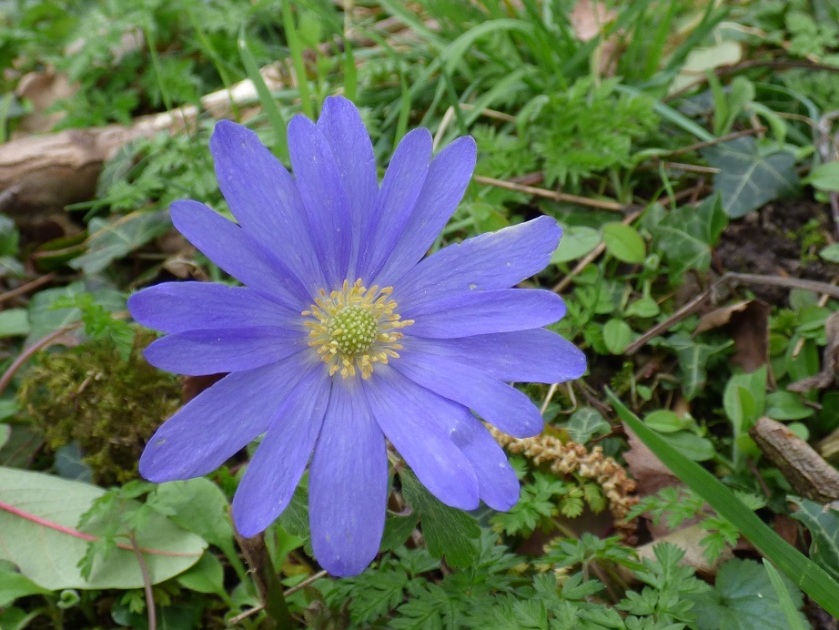At this time of year woodland plants are racing to flower, attract pollinating insects and seed next year’s generation. This all needs to happen before the trees begin to unfurl their leaves and take away the essential daylight that allows them to photosynthesize and flourish.
At the edge of a small deciduous copse at the north end of the old grass tennis court (now the flower garden) we have a delightful area that is looking at its best right now. Unlike many summer flowers that have big showy blooms these spring flowers are typically more restrained. It is important that you take the time to just stop and look closely at what is growing and flowering under your feet.
From a distance the most obvious flowers you see are the native primroses (Primula vulgaris). Nestled amongst these are the small blue star-like flowers of the Chionodoxa. These bulbs have taken some time to establish but now return reliably each year contrasting beautifully with the pale yellow primroses on the bank.

Also present amongst the dry leaf litter close to the yew tree are the purple pink flowers of Cyclamen coum . The foliage on these small plants I think is particularly lovely.

Some years ago we planted the lungwort Pulmonaria ‘Sissinghurst White’. As with the Cyclamen coum the characteristic white dots on the Pumonaria foliage adds additional interest. I think it is fair to say however that it is not entirely happy in this situation. It certainly survives from year to year but really has not romped away as we would have liked. Time to move it on to somewhere new perhaps.

In contrast a plant that is extremely happy in this woodland area is the Wood Spurge (Euphorbia amygdaloides). We use lime green a lot throughout the garden to set off other plants and this area of wood spurge really shines out under the trees looking fresh and lush at this time of year.

We are also delighted that the wood anemones (Anemone nemorosa) we planted a few years ago are now beginning to establish as well. A member of the buttercup family these small plants are so charming. Also known as wind flowers they move with such grace as the breeze blows through the trees.

Last but not least are the daffodils and narcissus. For me they just shout springtime and shine out even on a cold dull march day.

The whole feeling of this area is only very transient but that is part of its charm. As we move into April and May a new cast of characters will emerge. The fresh green leaves of Anthriscus sylvestris (Cow Parsley) are already beginning to develop and very soon the woodland will be cloaked with a mass of frothy white flowers. We have added a new area of martagon lilies. So far so good, they have come up and are looking very promising.
As the grass begins to grow up and the tree leaves unfurl the smaller plants will seed and slowly die back returning to make us smile again next year.







